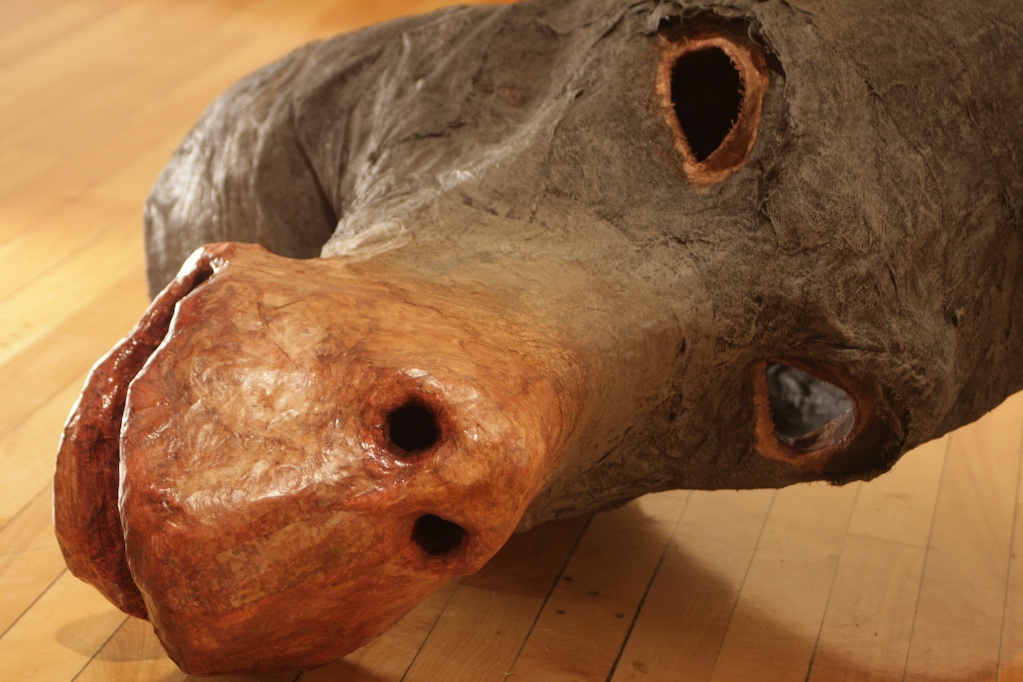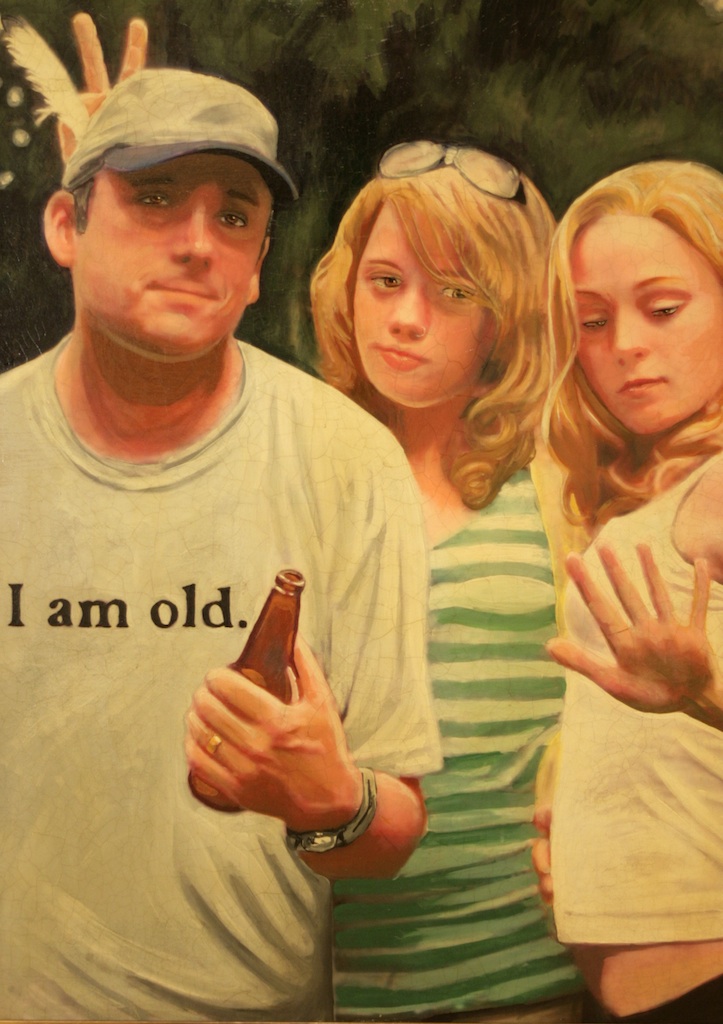Contemporary Portraiture

Finding the Bard in Contemporary Portraiture
This gallery examines Shakespearean portraiture in contemporary Canadian visual arts. Of the sixteen pieces, five were commissioned specifically with Shakespearean adaptation in mind–many of the other images adapt Shakespeare via allusion and subtle quotation. The visible Shakespearean referents in the varied media, however, regardless of the artists’ intentionality, attest to the ways in which Shakespearean characters and story-lines permeate Canadian culture. The myriad Shakespearean representations and the manner and medium in which they are demonstrated–using food materials, papier mâché, painting, photography, found objects–testifies to the inventiveness of visual adaptations of Shakespeare in Canada, even as it puts to the question any notion of what the designation “portrait” actually means as a referent for an authentic experience of the figure represented by the portrait.
 The evolution of portraiture and what constitutes a portrait, and how portraits hold the ability to engage their audience in a discourse on identity and narrative is explored within this gallery on the Bard in Contemporary Portraiture. Within the Shakespeare Made in Canada exhibit this gallery was intended to showcase works specifically commissioned with Shakespeare in mind, and others that were made for a completely different purpose. The ability to see Shakespearean characters and tropes within the non-commissioned pieces attests to the pervasiveness of Shakespeare’s writings as markers of shared cultural experiences. Notable examples include Jean-Paul Tousignant’s Nathan and Erin, whose wide eyed vulnerability and diary-like scrawling suggest a modern Romeo and Juliet, and Shelly Niro’s representation of storytelling and mythology in Ghost, representative perhaps of patriarchal ghosts that haunt Hamlet.
The evolution of portraiture and what constitutes a portrait, and how portraits hold the ability to engage their audience in a discourse on identity and narrative is explored within this gallery on the Bard in Contemporary Portraiture. Within the Shakespeare Made in Canada exhibit this gallery was intended to showcase works specifically commissioned with Shakespeare in mind, and others that were made for a completely different purpose. The ability to see Shakespearean characters and tropes within the non-commissioned pieces attests to the pervasiveness of Shakespeare’s writings as markers of shared cultural experiences. Notable examples include Jean-Paul Tousignant’s Nathan and Erin, whose wide eyed vulnerability and diary-like scrawling suggest a modern Romeo and Juliet, and Shelly Niro’s representation of storytelling and mythology in Ghost, representative perhaps of patriarchal ghosts that haunt Hamlet.
 The gallery deliberately made it difficult to recognize the Shakespearean pieces commissioned specifically for the exhibit as compared with those not made with Shakespeare in mind. This interpretative problem speaks to the full spectrum of adaptation in visual arts–to what extent are unintentional resonances associated with Shakespeare’s iconic presence in contemporary Canadian culture always already present in the visual arts? Verne Harrison’s work, Sit on my Knee, Doll, takes one line from Henry IV and creates a deeply ironized self-portrait that becomes only apparent upon seeing the line spoken by Falstaff. Cheryl Ruddock’s Recovered Kelp, Lost Dress creates a portrait without a figure, thus exploring the reading of Ophelia’s suicide as a negation of female presence with a drawing of a dress and sea kelp but no human figure present except by inference.
The gallery deliberately made it difficult to recognize the Shakespearean pieces commissioned specifically for the exhibit as compared with those not made with Shakespeare in mind. This interpretative problem speaks to the full spectrum of adaptation in visual arts–to what extent are unintentional resonances associated with Shakespeare’s iconic presence in contemporary Canadian culture always already present in the visual arts? Verne Harrison’s work, Sit on my Knee, Doll, takes one line from Henry IV and creates a deeply ironized self-portrait that becomes only apparent upon seeing the line spoken by Falstaff. Cheryl Ruddock’s Recovered Kelp, Lost Dress creates a portrait without a figure, thus exploring the reading of Ophelia’s suicide as a negation of female presence with a drawing of a dress and sea kelp but no human figure present except by inference.
Click the following links to access the Image Gallery and the Video Gallery
